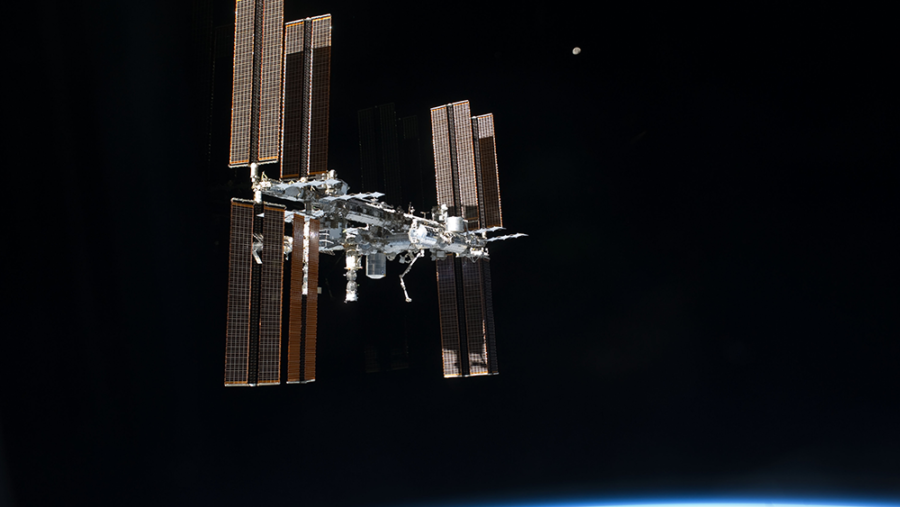International Cooperation Continues on Board the International Space Station in Spite of the Recent Soyuz MS-10 Launch Abort
This month, the International Space Station celebrates 18 years of continued human occupation and the 20th anniversary of the launch of the Zarya module, the first part of the station.
Both NASA and Roscosmos (the Russian space agency) had hoped that the 18th anniversary of Expedition 1 would be celebrated with both Soyuz MS-09 (Cosmonaut Sergey Prokopyev, Astronaut Alexander Gerst, and Nasa Astronaut Serena M. Auñón-Chancellor) and MS-10 (Cosmonaut Aleksey Ovchinin and Nasa Astronaut Nick Hague) crews on board for Expedition 57, however this was not the case.
On Oct. 11, the Soyuz MS-10 crew, including Roscosmos Cosmonaut Aleksey Ovchinin and Nasa Astronaut Nick Hague, launched from the Baikonur Cosmodrome in Kazakhstan. Unknown to the crew or the people in mission control, there was a mistake made during assembly of the rocket, which caused a sensor failure in one of the boosters on the Soyuz-FG rocket.
Instead of all the four boosters separating in a formation called the “Korolev cross,” which was supposed to happen, a defect on one of the sensor caused the liquid oxygen, or LOX, valves to not vent. The failure to vent caused one of the boosters to slam into the rocket upon separation, punching a hole in a tank on the second stage of the rocket. The Soyuz rocket and the capsule with the two men started to tumble uncontrollably, causing the Soyuz spacecraft to eject off the rocket.
The Soyuz spacecraft went into a ballistic trajectory and only managed to ascend to 50 kilometers above the earth before descending. The capsule landed near the town of Jezkazgan, Kazakhstan. Both men aboard were not hurt during the accident.
In recent weeks, other unmanned Soyuz launches have occurred. Roscosmos launched two Soyuz 2-1b rockets from the Plesetsk Cosmodrome in Russia. ESA (the European Space Agency) launched one Soyuz ST-B rocket from the Centre Spatial Guyanais in Kourou, French Guiana. The past three successful Soyuz rocket launches have shown that the problem has been fixed.
The first module of the International Space Station, Zarya was launched on Nov. 20, 1998. The Zarya module is also known as the Functional Cargo Block. Zarya was built by Russia using American money and is derived from previous Soviet designs. Specifically, the Zarya is derived from the Soviet TKS spacecraft, which was meant to resupply the Soviet Almaz or Salyut space stations.
Zarya was built between 1994 and 1998 by the Khrunichev State Research and Production Space Center in Moscow, Russia. The Zarya module was originally designed to be part of the Russian Mir space station (1986-2001). However, due to Mir’s decaying orbit and its age, the station was abandoned and reentered the earth’s atmosphere. Zarya was then designated as the first module of the International Space Station. The module functions mainly as the power source, and provides propulsion for the initial years of the Station’s construction. Today, the Zarya module is mainly used for storage.
The Unity module, also known as Node 1 was the second module of the International Space Station. Unity was built by both Nasa and Boeing at Nasa’s George C. Marshall Space Flight Center in Huntsville, Alabama. Unity launched aboard Space Shuttle Endeavour (STS-88) on Dec 4, 1998 from Launch Complex-39A at Kennedy Space Center, Florida. On Dec 6, both Unity and Zarya were docked together in orbit.
The Zvezda module, also built in Russia by the PAO S. P. Korolev Rocket and Space Corporation Energia or RKK Energia, and by GKNPTs Khrunichev between 1985 and 1986 initially. Zvezda was originally meant for the planned Mir-2 station and it would have served as the core block of the planned station. Instead, it was modified for the ISS. Zvezda was launched on a Proton rocket from the Baikonour Cosmodrome, Kazakhstan on July 12, 2000.
With the first three modules of the International Space Station in orbit, the crew of Expedition 1 prepared for launch. Commander Astronaut Bill Shepard and Cosmonauts Sergei Krikalev and Yuri Gidzenko launched aboard the Soyuz TM-31 from the Baikonour Cosmodrome and docked to the young station on Nov 2, 2000. The docking officially began Expedition 1 and 18 years of constant human occupation aboard the ISS.
Space Shuttle Discovery docked to the ISS carrying both the crews of STS-102 and Expedition 2 on March 10, 2001. Expedition 1 ended when the crews of Expedition 1 and STS-102 departed aboard Space Shuttle Discovery on March 19, 2001.
Construction finished on board the ISS in 2011. The Station now comprises of 16 pressurized modules and many other unpressurized components. The station today is now the size of a football field. Nov. 20, 2018 marks the 20th anniversary of the launch of the Zarya module and hence the 20th anniversary of the International Space Station.
The past few days also have been very busy for the International Space Station. On Sunday Nov 18, the unmanned Soyuz Progress 71 Spacecraft docked to the ISS. On Monday Nov 19, Northrup Grumman’s Cygnus NG-10, the “S.S. John Young,” docked to resupply the ISS after a Saturday morning launch from Pad-0A at Wallops Mid-Atlantic Regional Spaceport in Virginia.
The Soyuz MS-11 crew including Roscosmos Cosmonaut Oleg Kononenko, Canadian Astronaut David Saint-Jacques, and Nasa Astronaut Anne McClain will launch for Expedition 58 in December from Baikonur Cosmodrome in Kazakhstan.


